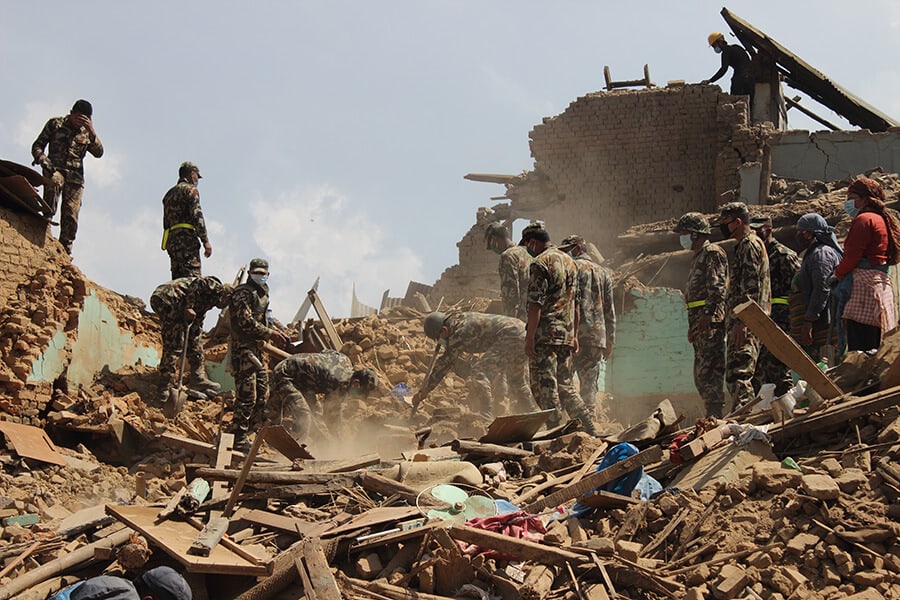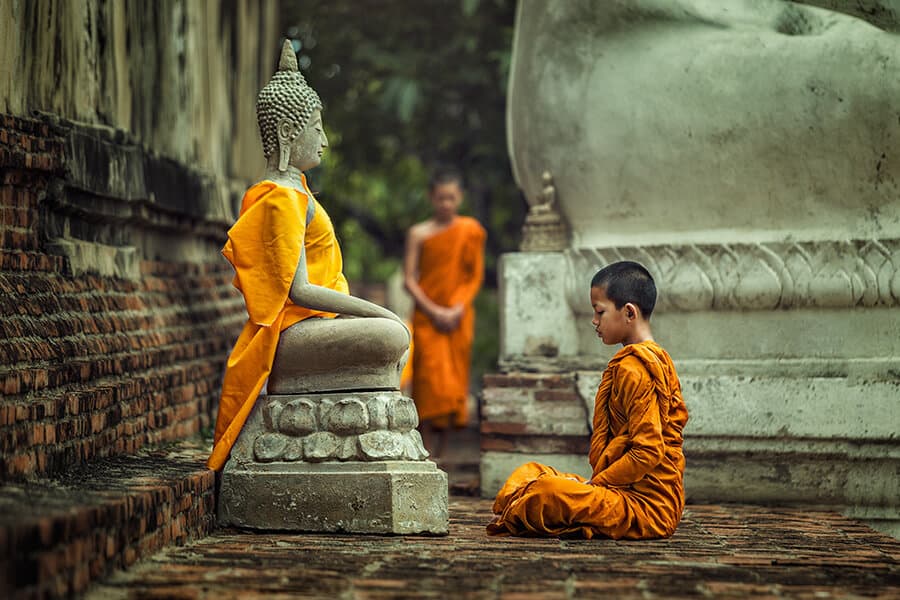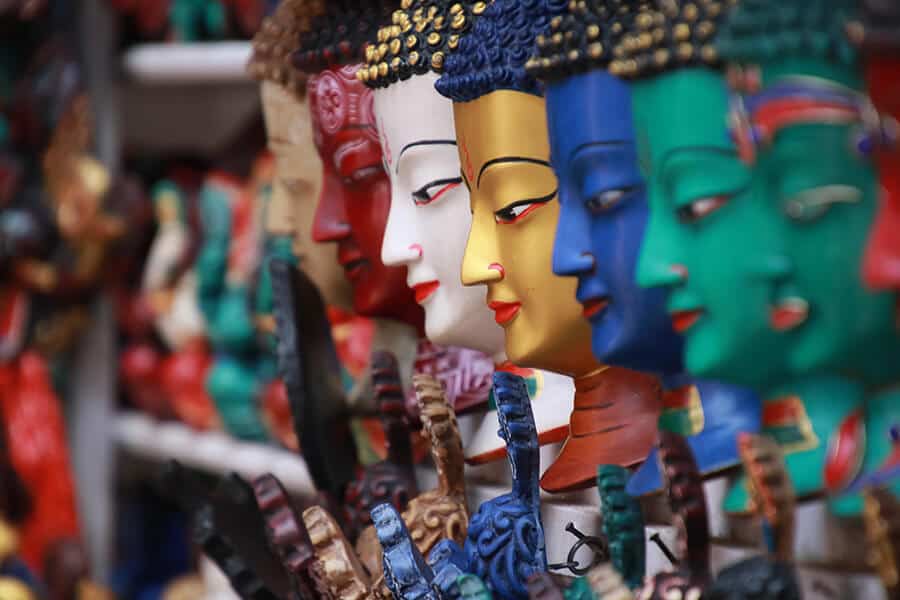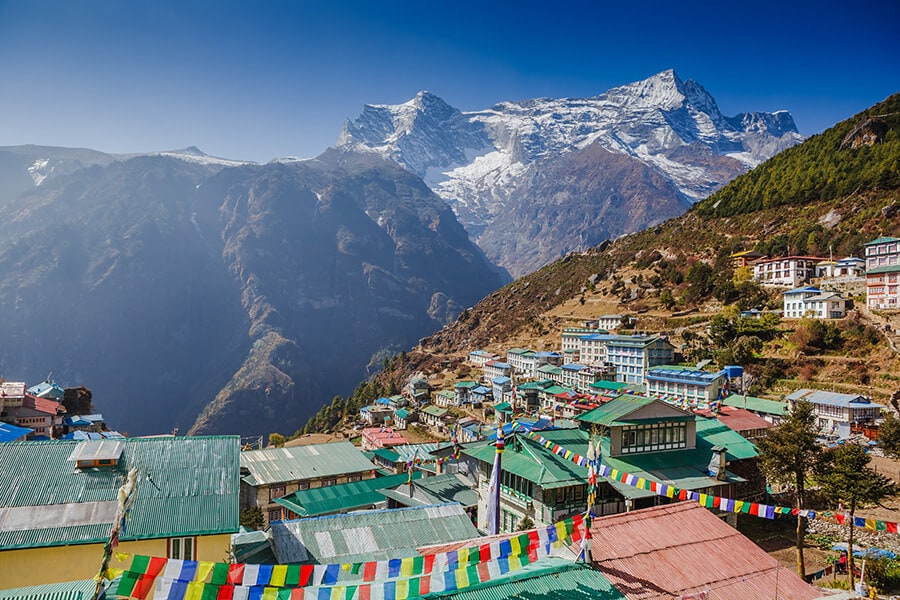Happily nestled in the lap of the Himalayas, Nepal is home to the world’s highest mountains, including Mt. Everest, which is locally known as Sagarmatha. The landlocked country remained long out of reach of the outside world until the year 1951. With hippie culture emerging in the late 1960s, Nepal suddenly became a hub for western explorers and travellers. The nation today serves like a magnet to mountaineers, rafters, and trekkers from around the globe. Let’s explore hippie and happy Nepal through the vestiges of its past and the promises of its here and now.
Nepal has had an interesting history. It remained long under the rule of hereditary prime ministers until a palace revolt in 1950 helped to restore the crown’s authority.
In 1955, it was granted admission to the United Nations, and it was in the year 1991 that the Himalayan kingdom developed a multiparty parliamentary system.
It was finally declared a democratic republic in the year 2008 after the dissolution of the monarchy.
The country adopted a new constitution in 2015 and became the first country in Asia to specifically protect gay rights.
However, lacking significant resources for economic development, Nepal remains one of the least developed nations in the world.
The country underwent further misery when it was hit by a 7.8 magnitude earthquake in 2015 that left many places devastated.

Over the years Nepal has established itself as a destination of choice both for tourists seeking a tranquil stay in an idyllic, laid back world as well as those seeking the adrenaline rush of conquering the highest peaks.
Buddhism, Mindfulness and the Path to Happiness
Buddhism has had a profound impact on the cultural and religious history of Nepal as the Himalayan nation is the birthplace of Gautam Buddha.
Lumbini, the birthplace of Buddha, is one of the world’s most important Buddhist pilgrim sites.
As per UNESCO and an inscription found on a pillar erected in 249 BC by emperor Ashoka, Buddha was born in the sacred area of Lumbini in 623 BC.
The town hosts over 25 Buddhist monasteries built by various countries from Vietnam to France. Nepal was a centre of Buddhism during the Licchavi period, which lasted until 880 AD.

Another important Buddhist site in Nepal is the Swayambhu Stupa in Kathmandu.
The word “Swayambhu” means self-manifested.
According to a folktale, the present-day Kathmandu valley was once a lake, and the Swayambhu hill existed in this lake like an island.
Once, while crossing at this place, the Buddha is said to have tossed a seed into the lake, giving rise to a lotus flower and a Stupa.
Tradition holds that a Buddhist monk from China drained the lake to make the crystal stupa accessible to people.
Happiness has been an integral part of Buddhist teaching, an outgrowth of a deeper understanding of one’s own self. Buddha emphasised the art of letting go and not holding on to things.
The carefree, peaceful life of the locals in Nepal, far removed from the material pursuits of the more developed world, is a glimpse into a life philosophy that is rooted in finding joy in little things.
The outcome of living in this manner is a strong sense of inner peace and mindfulness that allows one to better experience the good things in life.
Hippie Culture
The Hippie Culture of Nepal found its epicentre in Freak Street.
Freak Street housed government-run hashish shops, which made it a popular attraction. Beginning in the 1960s, the search for legal cannabis drew hippies all the way to this quaint, laid-back mountain nation as thousands of young men and women bused or hitch-hiked all the way to Nepal from Europe and the USA.
For quite some time, the valley of Kathmandu served as an abode for hippie artists, musicians, poets and writers.
However, Nepal had to enact the “anti-drug” law in 1973 following US President Richard Nixon’s declaration of “War on Drugs” in 1971.
Today, Freak Street is not at all as it used to be back in the late 1960s and has been almost overshadowed by the glamour of the Thamel market, where hippie era nostalgia still runs high.
A backpacker’s paradise, the streets of Thamel in Kathmandu will disappoint no one.
Along the labyrinth of colourful streets of Thamel, vendors can be seen selling traditional Nepali items like dried spices, cheap textiles, Buddhist paraphernalia, wooden artefacts, stamps, currencies, colourful tapestries, and aroma candles.
In the chaotic hustle and bustle of the market that draws the wanderer, you’ll find yourself fawning over an abundance of Tibetan goods, soft textiles and woollens, silver jewellery, and hiking gear.
The bustling night life of Thamel is equally enchanting, offering all kinds of indulgence.

The Hippies were not just a community of young men and women with long matted hair dressed in colourful clothes, they were also readers and great lovers of books.
They were drawn towards spirituality, Buddhism, and eastern mysticism.
They were on a quest to explore different cultures, languages, and experiences.
In Kathmandu, a group of hippies founded and operated The Spirit Catcher Bookstore, where they bought, sold, and traded in books.
Weekly poetry sessions were organised, and the bookstore served as a den for emerging and established artists who had made Kathmandu their home.
Nepal in Books and Music
Movies, books, and music have all made their audiences dream of Nepal as a far-flung fantasy land that has a lot of hidden gems to offer, and it is perhaps this search for the elusive that still draws almost a million visitors to Nepal every year.
Books like Far Out by Mark Liechty have successfully captured the essence of the hippie world in Kathmandu.
Liechty says, “Most hippies went home, got jobs, and returned to their middle-class birth rights.
But some stayed on, trying to keep alive the dream of a nonconformist and spiritually oriented, culturally attuned creative community in exile.
” Other interesting books on this subject include Hippie by Paulo Coelho and Magic Bus: On the Hippie Trail from Istanbul to India by Rory MacLean.
Through a landscape of breath-taking beauty, Rory MacLean’s book traces the “hippie trail” from Turkey to Iran, Afghanistan to Pakistan, India to Nepal, capturing the fascination of an itinerant life.
American rock artist Bob Seger’s 1975 song Kathmandu captures the yearning of a young man wanting to visit the valley of Kathmandu.
“I think I’m going to Kathmandu / That’s really, really where I’m going to”
The song has expressed a certain romantic notion to people who have wished to get out of their humdrum lives in the cities and escape to some exotic idyll in the east.
And although the current times have kept us all away from planning trips and adventures, there will surely be a day in the near future when we will be playing all those travel songs, packing our bags and really, really going someplace as hippie and happy as Kathmandu!
Photos: Shuttesrtock
Read more from the author here.
Support us!
All your donations will be used to pay the magazine’s journalists and to support the ongoing costs of maintaining the site.
Share this post
Interested in co-operating with us?
We are open to co-operation from writers and businesses alike. You can reach us on our email at [email protected]/[email protected] and we will get back to you as quick as we can.









